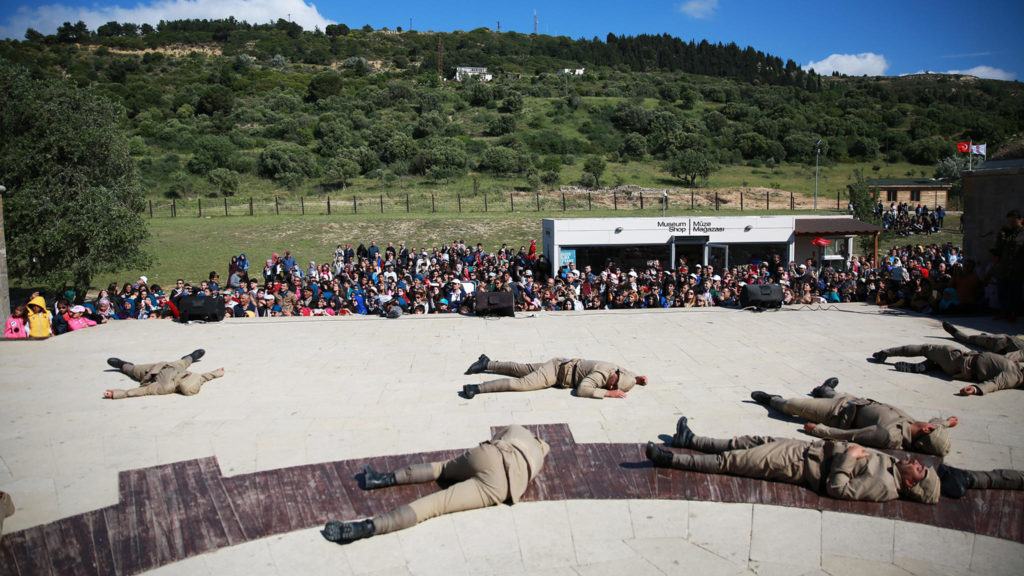Reviews include Superman, Apocalypse in the Tropics, and To a Land Unknown.
Looking, Listening: The Docs of IFFR
February 13, 2019
Part 2 of IFFR coverage; find Part 1 here.
It began with some charismatic, inexpensive little toys being sold in the streets of Yashaswini Raghunandan’s hometown; simple, pretty items made of clay, paper, plastic and, most intriguingly, celluloid — single frames extracted from discarded reels of Bollywood films. Raghunandan’s curiosity about these toys and their peculiar components led her to the small village about 200km from Kolkata, where they’re manufactured by hand. Raghunandan made herself a sort of artist in residence, interacting with the local populace, observing them at work and play and involving them in creative exercises that would eventually result in one of my favourite films screened at the 2019 Rotterdam International Film Festival.

I didn’t know any of that backstory when I settled in to watch That Cloud Never Left. In fact, I hadn’t the slightest idea what I was going to experience before being subjected to hypnogogic flurries of painterly patterns intercut with images of hands carving clay rings, bamboo cutters smoking beedis, ferry rides filmed to make it seem like the shore orbits around the watercraft, and children searching for a ruby in tall reeds. Raghunandan’s beguiling experimental documentary celebrates the tactility of both cinema and simple handmade objects, while imbuing more vaporous phenomena — television broadcasts, electric lights, atmospheric disturbances, a total eclipse—with renewed strangeness. That Cloud Never Left is a deeply playful film, engaging with some of cinema’s foundational elements: the pleasures of looking, listening, anticipating, searching.

The pleasures to be found in Last Night I Saw You Smiling, meanwhile, are of a more melancholy variety. Kavich Neang had long wanted to shoot a fiction film in the White Building, the iconic Phnom Penh apartment block where he grew up. Before such aspirations could be realized, however, the White Building, which had withstood the rise and fall of the Khmer Rouge, was slated for demolition. So Neang did what any enterprising young filmmaker would do: racing against time, he shot a documentary instead, one made in a spirit akin to that of Pedro Costa’s In Vanda’s Room. To be sure, Last Night I Saw You Smiling doesn’t possess anything like the sweep or gravitas of Costa’s masterwork of community portraiture, but it does feature some brilliantly composed scenes of families forced to tear down their own homes and individuals in the thrall of inevitable nostalgia, singing old songs, going through dusty belongings or giving guided tours of their humble, beloved abodes before they’re turned into dust.
One’s home needn’t literally disappear to elicit profound longing for it — some of the hordes of pilgrims featured in Köken Ergun’s Heroes, for example, actually travel halfway across the world in order to feel closer to their homeland. The film follows tourists from Turkey, Australia and New Zealand as they journey to a vast historical theme park in Gallipoli, or Çanakkale, the peninsula upon which one of the First World War’s most devastating battles took place. All of Ergun’s previous work interrogates nationalism, and this, his first feature documentary, expands the scope of his critique to explore the sentiment as it manifests in the descendants of veterans from opposing sides of a century-old conflict.

For a variety of logistical reasons, Ergun largely focuses on his fellow Turks, who board busses where hyperbolic tour guides shamelessly glorify the hardships of their countrymen — the film’s Turkish title is Şehitler, which translates directly as Martyrs — and attend hysterically melodramatic theatrical pageants in which soldiers leave their devoted families or perform supernatural feats of heroism. The risibility of the presentations included in the Gallipoli tour package, along with the apparent rapture of the audiences, puts Heroes in danger of tipping over into pure condescension, yet Ergun invests enough time in his subjects — most especially a young New Zealander earnestly inspired by the legendary Australian stretcher bearer John Simpson Kirkpatrick — so as to prompt more empathy, or at least curiosity, than outright dismissal.
Ergun also told me a story after the screening I attended that complicated my reading of the pilgrims’ gullability. The first time he went on the Gallipoli tour, Ergun sat beside an old lady. As their bus climbed a mountainside overlooking the Aegean, their tour guide went into one of many spiels about Ottoman superiority. Ergun noticed that the old lady was crying and, afterward, asked her if the tour guide’s words had really moved her so. “No,” she told him, “I’m crying because it’s been years since I’ve laid eyes on the sea.”



